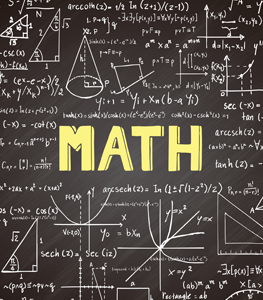Online Tutoring for Maths (Year-11)

Welcome to our Year 11 Maths tutoring program! Our online sessions are designed to provide comprehensive support to students as they navigate the complexities of senior-level mathematics. Our tutors provide in-depth explanations and clear examples to ensure a thorough understanding of complex mathematical concepts.
- We focus on developing problem-solving skills and critical thinking abilities required for tackling challenging mathematical problems.
- Students are guided through strategies for breaking down problems, identifying key information, and applying appropriate mathematical methods.
Course Content
Number, Algebra, Measurement, Space, Statistics, Earth geometry, time zones, Relative frequencies, Data collection, Graphs, Scales, plans and models, Time and Probability
Summarizing some important topics below ( the actual Curriula contains more than these topics)
- Display numerical data as frequency distributions, dot plots, stem and leaf plots, and histograms
- Calculate measures of central tendency, the arithmetic mean and the median
- Recognise the properties of common two-dimensional geometric shapes and three-dimensional solids
- Estimate and compare quantities, materials and costs using actual measurements from scale drawings; for example, using measurements for packaging, clothes, painting, bricklaying and landscaping.
- Compare the characteristics of the shape of histograms using symmetry, skewness and bimodality.
- Determine the overall change in a quantity following repeated percentage changes; for example, an increase of 10% followed by a decrease of 10%
- Apply percentage increases and decreases in situations; for example, mark-ups, discounts and GST.
- Use rates to make comparisons; for example, using unit prices to compare best buys, comparing heart rates after exercise.
- Calculate perimeters of familiar shapes, including triangles, squares, rectangles, and composites of these.
- Use metric units of mass, their abbreviations, conversions between them, and appropriate choices of units
- Calculate the volume of objects, such as cubes and rectangular and triangular prisms.
- Use units of energy to describe consumption of electricity, such as kilowatt hours
- Use units of energy to describe the amount of energy in activity, such as kilojoules
- Substitute numerical values into algebraic expressions
- Substitute given values for the other pronumerals in a mathematical formula to find the value of the subject of the formula.
- Interpret information presented in graphs, such as conversion graphs, line graphs, step graphs, column graphs and picture graphsDraw a line graph to represent any data that demonstrate a continuous change, such as hourly temperature.
- Use informal ways of describing spread, such as spread out/dispersed, tightly packed, clusters, gaps, more/less dense regions, outliers
- Complete calculations with rates, including solving problems involving direct proportion in terms of rate.
- Use units of time, conversions between units, fractional, digital and decimal representations
- Calculate perimeters of familiar shapes, including triangles, squares, rectangles, polygons, circles, arc lengths, and composites of these.
- Locate positions on Earth’s surface given latitude and longitude using GPS, a globe, an atlas, and digital technologies
And much more …. Genius Petals’ Tutors always focus on teaching more than the prescribed Syllabus to prepare the students for Competitive exams and make their journey smoother…Like we believe and always focus on ‘’Transforming Learning into Brilliance’’ !!
